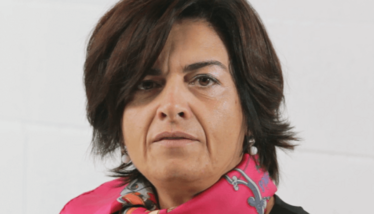
The Future of Fluid Bed Granulation
Granulation is a staple step in pharma manufacturing, with fluid-bed processing a popular option. Guia Bertuzzi, Product Manager for Granulation at IMA Active, Italy, discusses the evolution of granulation machinery – and what the machines of tomorrow might look like.

How is granulation equipment advancing to meet the needs of drug manufacturers today?
Companies have historically looked for robustness, containment and flexibility – all at the lowest cost possible! And though these elements are still crucial, there is now also a growing demand for improved process control, and machines that reduce manual intervention and offer energy savings. Customers are also requesting granulators as a package, including more appropriate tools for scale-up, training, automation, and predictive maintenance.
There are a variety of granulation technologies available today that suit pharma’s newer requirements, including dry, wet and melt granulation. Though these technologies don’t compete with one another, wet granulation provides the broadest range of function. But ultimately, the right machine must meet a company's needs for product handling, productivity, cost, operator safety, and also work within their engineering and architecture constraints.
For instance, because pharma companies are increasingly working with highly potent APIs (HPAPIs), the granulation technology selected should allow for the proper management of air displacement, which reduces the risk of airborne contamination. A high level of automationanda material transfer process that keeps the product away from operators and the environment is also essential. Single-pot processes are usually highly suitable for HPAPIs. As one example, our Roto Cube technology, developed in 1984, is a single-pot process that allows the entire process of any type of product, from the loading of raw materials to the discharge of dry granules, to be carried out in a single, contained bowl, thus almost eliminating contact between product, operator and the environment.
The vast array of single pot-processors available means that finding one with the right specification should be straightforward for companies looking to invest in new equipment.
What should companies think about when choosing granulation technology?
Choosing the right granulation machinery will often involve a few compromises. The average lifespan of granulation equipment is around 20 years, so you need to think long term. The right machine should i) meet both current and expected future needs, ii) address productivity, iii) fit in the space the company has available, and iv) be capable of conducting processes in the shortest time possible.
I also believe that versatility is very important. You should look at versatility of the processes – drying, granulation, and coating – and versatility in terms of filtration technology. Different products and types of processing may require different forms of filtration, such as bag filters, star-pleated or stainless steel cartridges.
Be aware that, because of the long-life estimates of granulation systems, you may need to upgrade electrical components as infrastructure advances.
Take us inside the ARIA fluid bed unit. How does the system work?
ARIA is a fluid bed unit for the processing of powders, granules and pellets that allows different types of processes, including drying, granulating (top spray), and coating (bottom spray), offering flexibility of batch size processing in the same equipment. The system ensures a fully contained process, including closed product loading and unloading by means of pneumatic or gravity transfers to reduce manual intervention.
Granulation is achieved by suspending the powder in heated air of the fluidized bed, and then spraying the binder solution from air-assisted nozzles. ARIA can be operated depending on the position of the spray system in either top-spray or bottom-spray to make granules or coated pellets.
ARIA supports various different forms of filtration that are kept clean during the process by pulses of air counterflow, which do not disturb product fluidization. The operator can inspect and change the filters using automatic movement of the supporting disk, minimizing the time required for a product change.
How can fluid bed machines be further improved?
Fluid bed is a mature technology, but in the last ten years there has been a sustained effort to improve air distribution, augment the reliability of filtration processes, and improve the efficiency of spraying technologies. However, the pharma industry is changing as companies begin to emphasize Quality by Design (QbD), process analytical technology (PAT), and process control, and with the emergence of new technologies, such as advanced modeling and simulation. There has also been a dramatic shift in industry attitudes with companies no longer wanting “make do” equipment and instead placing greater emphasis on innovation and new approaches to manufacturing.
The application of PAT sensors and models that help to run processes and ensure granules are manufactured according to target specification are already becoming industry norms, but the industry must now become further invested in understanding the benefits of these tools.
From my perspective, machine manufacturers need to find new ways of supporting customers focusing on support for a QbD approach. The challenge for the industry now is striking a balance between manufacturing standard equipment that integrates PAT and advanced process controls – and addresses the requirements of new industry standards – and the desire for customized machines.
After finishing my degree, I envisioned a career in science communications. However, life took an unexpected turn and I ended up teaching abroad. Though the experience was amazing and I learned a great deal from it, I jumped at the opportunity to work for Texere. I'm excited to see where this new journey takes me!



















